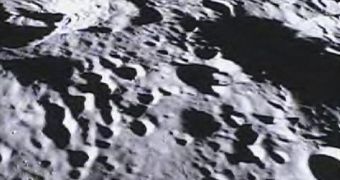Requests made by students at the Emily Dickinson Elementary School in Bozeman, Montana, have just been honored by one of the spacecraft making up the NASA Gravity Recovery And Interior Laboratory (GRAIL) mission. The image they asked for has just been beamed back to Earth.
These students earned their right to request such images from the American space agency, after they won a competition meant to find new names for both space probes. Their proposal, Ebb and Flow, were ultimately selected from hundreds of others.
The kids requested a photo of the far side of the lunar surface, with Earth in the background. One of the GRAIL probes used its Moon Knowledge Acquired by Middle school students (MoonKam) instrument to collect the new data.
A series of observations – covering more than 60 student requests – was conducted between March 15-17. The spacecraft sent the data back to Earth on March 20, experts from the NASA Jet Propulsion Laboratory (JPL), in Pasadena, California, report.
This is the first time NASA has sent a mission to space carrying instruments that are fully dedicated to education and public outreach. Previously, education played only a secondary role for the agency.
“MoonKAM is based on the premise that if your average picture is worth a thousand words, then a picture from lunar orbit may be worth a classroom full of engineering and science degrees,” Massachusetts Institute of Technology (MIT) expert Maria Zuber explains.
“Through MoonKAM, we have an opportunity to reach out to the next generation of scientists and engineers. It is great to see things off to such a positive start,” says Zuber, who holds an appointment as the principal investigator of the GRAIL mission.
“What might seem like just a cool activity for these kids may very well have a profound impact on their futures. The students really are excited about MoonKAM, and that translates into an excitement about science and engineering,” adds America's first woman in space, NASA astronaut Sally Ride.
She is working with colleagues at Sally Ride Science and the University of California in San Diego (UCSD) to manage the MoonKAM program. The former space flyer explains that about 2,700 schools from 52 countries are using data from this instrument.
Ebb and Flow reached lunar orbit on December 31, 2011 and January 1, 2012, respectively, and were originally scheduled to conclude their gravity mapping efforts in June. On March 19, NASA officials announced a three-month extension.

 14 DAY TRIAL //
14 DAY TRIAL //